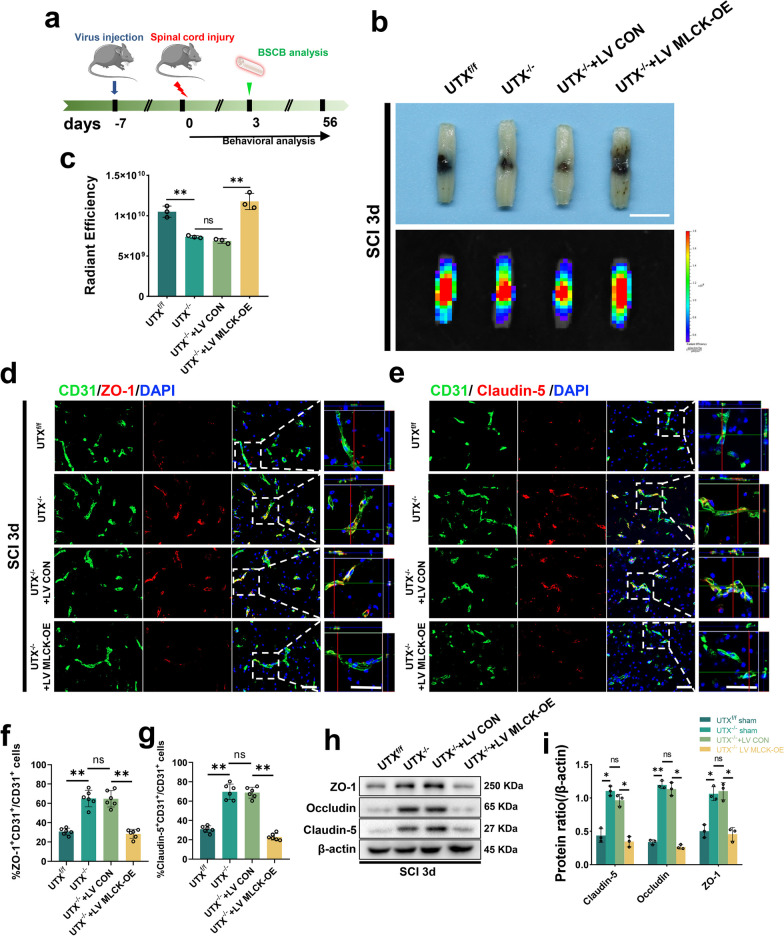Fig. 7.
MLCK overexpression mitigated reduced BSCB permeability in UTX−/− mice. a Experimental scheme. Lentivirus was injected into the spinal cord 7 days prior to SCI, and SCI 3d was performed for vascular permeability testing and further testing for neurological function analysis. b Representative digital pictures and NIRF images of spinal cord samples from EB leakage tests taken SCI 3d in UTXf/f, UTX−/−, UTX−/− + LV CON, and UTX−/− + LV MLCK-OE mice. scale bar, 5 mm. c Quantitative analysis of the radiant efficiency of EB in b. n = 3 per group. d, e Representative immunofluorescence images of ZO-1 or Claudin-5 (red) and CD31 (green), and DAPI (blue) staining of the injured epicenter of spinal cord in UTXf/f, UTX−/−, UTX−/− + LV CON, and UTX−/− + LV MLCK-OE mice with SCI 3d. Scale bars, 50 μm. f, g Quantitative analysis of CD31+ZO-1+ and CD31+Claudin-5+ cells as a percentage of CD31+ cells in d, e, n = 6 per group. h Western blotting analysis of the TJs-related protein levels including ZO-1, Occludin, and Claudin-5 in UTXf/f, UTX−/−, UTX−/− + LV CON, and UTX−/− + LV MLCK-OE mice at SCI 3d. i Quantitative analysis of the expression levels of ZO-1, Occludin, and Claudin-5 in h. n = 3 per group. Data are represented as mean ± SEM. ns P > 0.05, *P < 0.05, **P < 0.01

